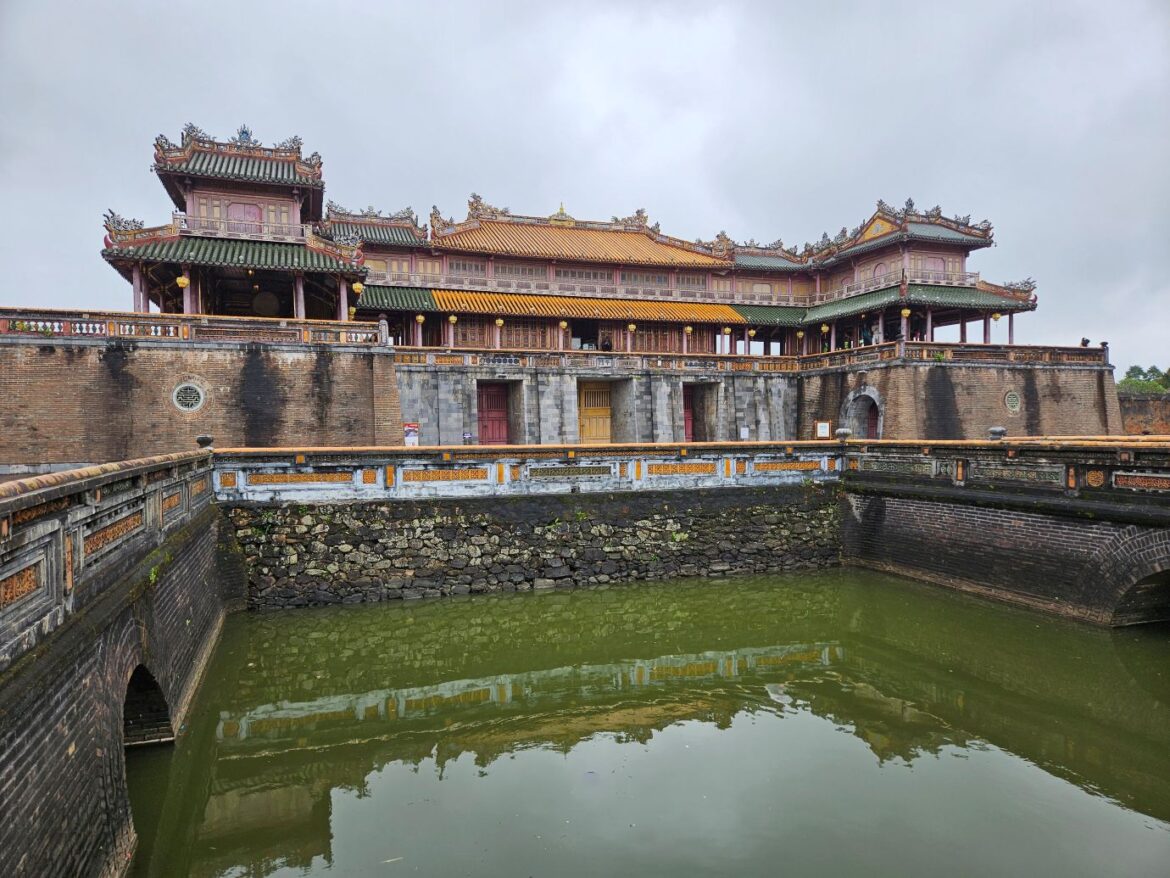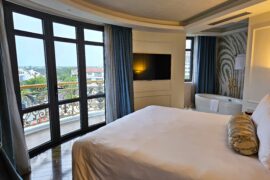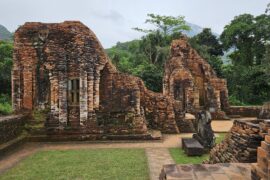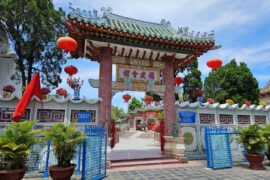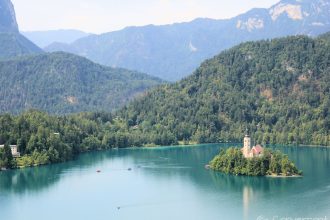If you’re looking for an interesting place to visit on your travels around central Vietnam, Hue City is a worthy contender, especially if you’re into history. The main reason to visit Hue is the Imperial City, a splendid citadel complex that was once home to the royal family.
Hue isn’t perhaps at the top of most Vietnam traveller itineraries, but we think Hue is well worth a visit, especially if you’re heading through the area en route to other destinations. You only need half a day to see the Imperial City, so you could even stop off during your journey without staying over. Although we really enjoyed our city stay, which we’ll mention below if you’re looking for accommodation ideas.
This guide focuses on Hue Imperial City, the walled citadel north of the Perfume River that was the royal seat of power before Vietnamese independence. There are other things to do in Hue if you’re interested in history, but the Imperial City is the reason people visit Hue.
Where is Hue in Vietnam?
You’ll find the city of Hue in central Vietnam, on the banks of the Perfume River, north of Da Nang and not far from the coast. Hue makes a convenient place for a breather if you’re on a long trip travelling between Hanoi and Ho Chi Minh City, and many people spend several days in this central, costal region, exploring Hoi An and Da Nang as well as Hue.
How to get to Hue
If you’re coming from the far north or south, you can catch a train to Hue – there’s a train station in the downtown area of the city. However, if you’re visiting Hue from somewhere like nearby Hoi An, your best bet is to book a private car transfer. We stopped in Hue for a couple of nights in between our visits to Hoi An, the hidden forest temples of My Son, and the beaches of Lang Co over on the coast.
A quick history of Hue
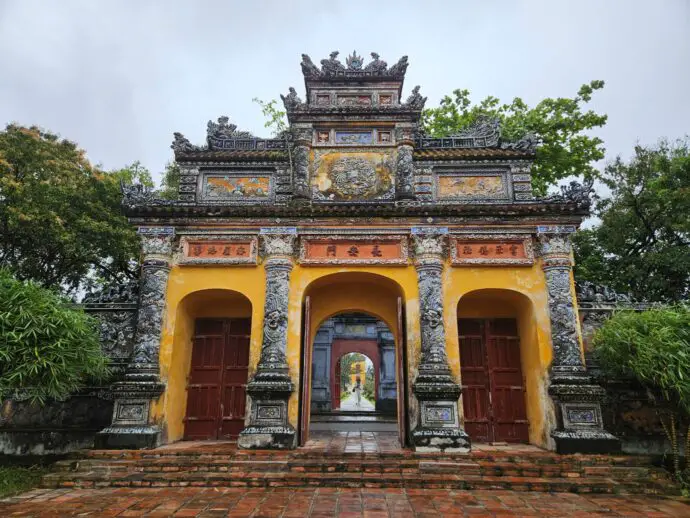
Hue was Vietnam’s very first capital city, located strategically in the centre of the country and uniting the regions under a single leadership arm. Ruled over by the powerful Nguyen Dynasty – the last royal family of Vietnam – the enormous Hue Citadel was home to palaces, temples and pavilions. The complex feels ancient, but you might be surprised to discover it was built relatively recently, back in the early 19th century.
This royal reign was short-lived, because by 1883 Vietnam was under French control, although the Nguyen Dynasty members were permitted to retain a presence. After that, Hue Citadel continued to be used for ceremonial purposes, but administrative and political decision making now took place in France.
Vietnam’s independence after the Second World War meant the end of royal rule, and later, in the 1960s, the Vietnam War took its toll on Hue city. It’s central location made it a target and the city saw lots of fighting between communist and allied forces, making Hue one of the bloodiest battle sites of the entire war. The citadel itself was badly damaged, and you can still see some of the bullet holes in the building walls as you wander around the site.
After years of restoration work, Hue Citadel is now a UNESCO World Heritage site that welcomes visitors from around the world. It’s now a very tranquil place, and one of the best things to do in Hue.
What not to miss in Hue Imperial City?
The Imperial City in Hue is huge, so don’t worry if you don’t have the time (or the inclination) to explore every last inch. These are the most important parts of Hue Imperial City to see:
Ngo Mon Gate
This is the southern entrance gate, and to be honest, we thought it was one of the most impressive buildings in Hue Imperial City. Built in the early 1800s and often used for ceremonial purposes, Ngo Mon Gate makes for a grand entry into the complex, with colourful roof tiling above the Five Phoenixes Pavilion and a bridge over the moat giving a taste of what’s to come once you’re inside.
You’ll notice that the central passage through the gate is closed. This was once used exclusively by the emperors, with everyone else using the other entries. A tradition that continues today (just without the emperors).
Kien Trung Palace
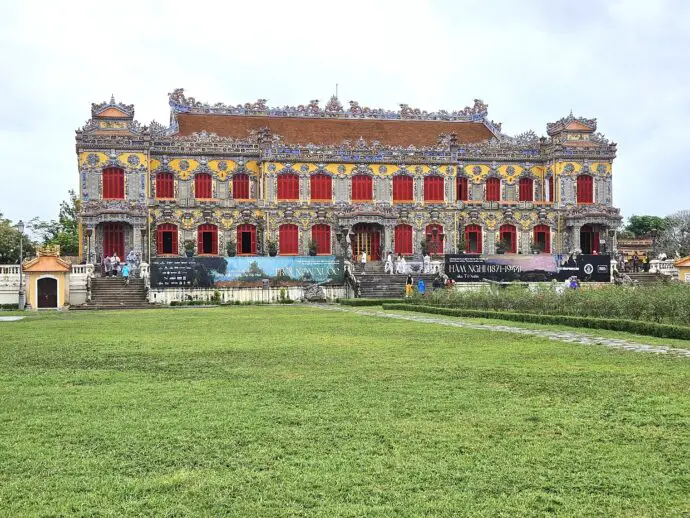
This is one of those “if you only see one place in Hue Imperial City, make it this one”! It’s the most impressive and most intact palace in the complex, perfectly framed by sweeping lawns with long pavilions running down the side. This is where you’ll see locals posing for photos in traditional costumes – it makes a great backdrop.
The palace was built in the 1920s and served as a royal residence until it was destroyed during the Vietnam War. What you see today is actually a reconstruction, and it was only recently reopened to the public in 2024.
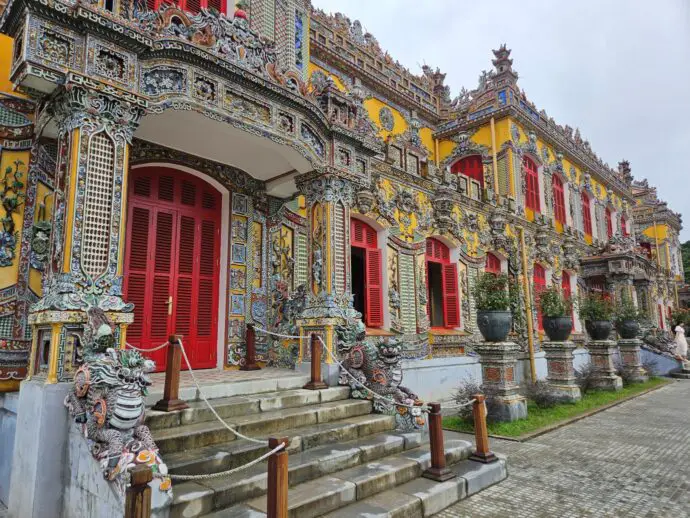
You can go inside and explore some of the downstairs rooms, with lots of pottery and dining furniture showing how the royals used to live. Back outside, we loved the ornate tiled dragons that stand guard at the doors.
Purple Forbidden City
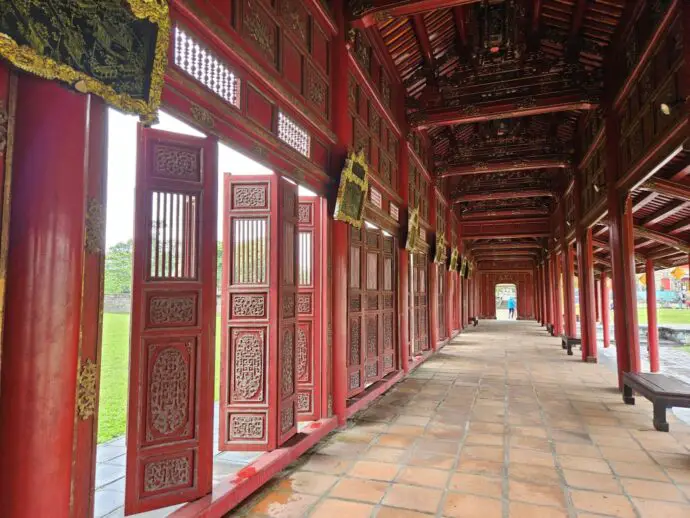
Modelled on the Forbidden City of Beijing in China, Hue’s Purple Forbidden City lies at the centre of the Imperial City. This is where the emperor and his family had their residences. It was a private place, and a retreat from the world for the royals.
There are several buildings to explore here, and lots of beautifully carved pavilion walkways painted in deep reds and golds that are perfect for photos. Inside some of the spaces you’ll find exhibitions on the citadel and its inhabitants.
Thai Hoa Palace
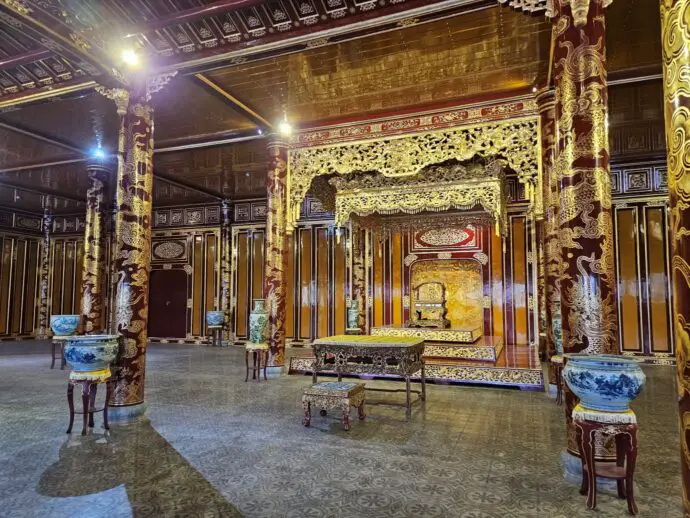
This is the first place you’ll come to after entering the city. Whilst it wasn’t our favourite building, it was pretty impressive to see the imperial throne, which has sat here in all its golden glory for decades. It’s here in the Thai Hoa Palace where the emperor would grant an audience to his people.
Dien Tho Palace
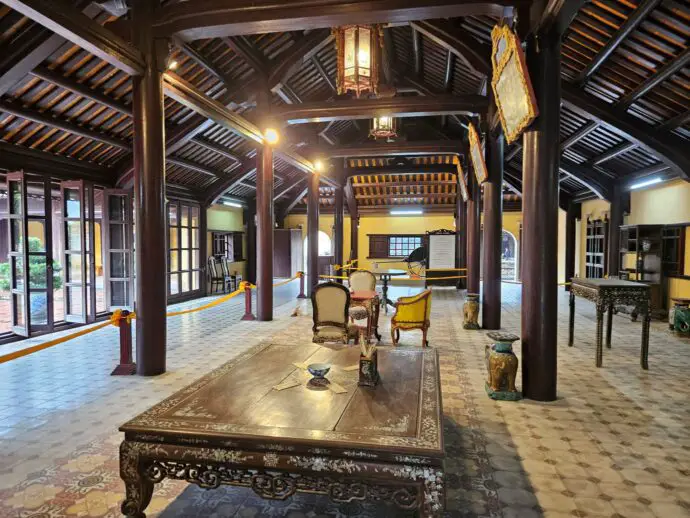
In the top left (or northwest) corner of the complex is the Dien Tho Palace. It’s a very peaceful spot, and less crowded than some of the other palaces (maybe not everyone can be bothered to walk this far), and for this reason, we really liked it. This place used to belong to the queen mother, and is still home to some of the original furniture. Outside, there’s a pond which makes the setting even more serene.
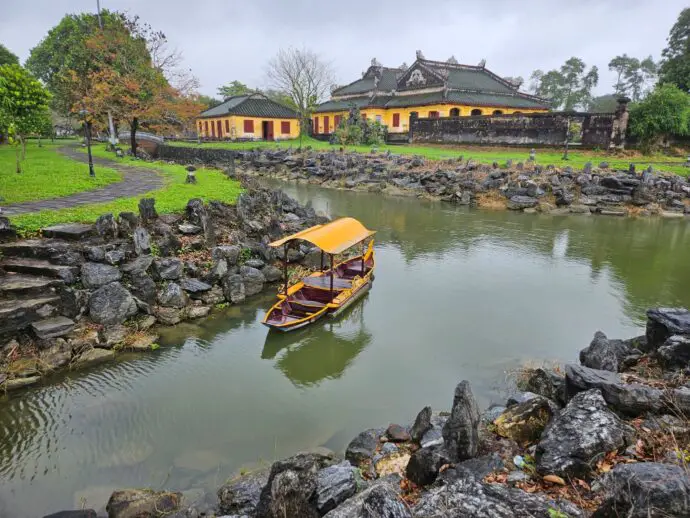
There are plenty of other buildings, gates, pavilions and gardens to explore in Hue Imperial City, but we think the above places are the main ones to see. The whole citadel is set out in a grid-like fashion, so it’s easy to take in most of the sites without too many detours. You’ll probably find you see more than you expected.
How much time do you need to visit Hue Imperial City?
Hue Citadel is pretty big, so allow half a day if you want to see everything. However, most people spend about 2 hours here in Hue Imperial City – with that you’ll see the main sights, which honestly, is enough. We were there for a couple of hours wandering at a slow pace and felt we’d seen everything we needed to by the time we left. If you’re there with a tour guide, you’ll probably spend a bit longer in the complex.
Where is the entrance to Hue Imperial City?
The entrance to the Imperial City in Hue is at the Ngo Mon Gate, in the centre of the southern wall of the complex. Taxi drivers can drop you off right outside the entrance. The exit is on the east side of the citadel at the Hien Nhon Gate.
Where to buy tickets for Hue Imperial City?
You can buy tickets at the counters by the entrance at Ngo Mon Gate. The current entry price is VND 200,000 (about £5.50) and includes admission to all the buildings in the complex. It’s cash only.
How to get around Hue Citadel?
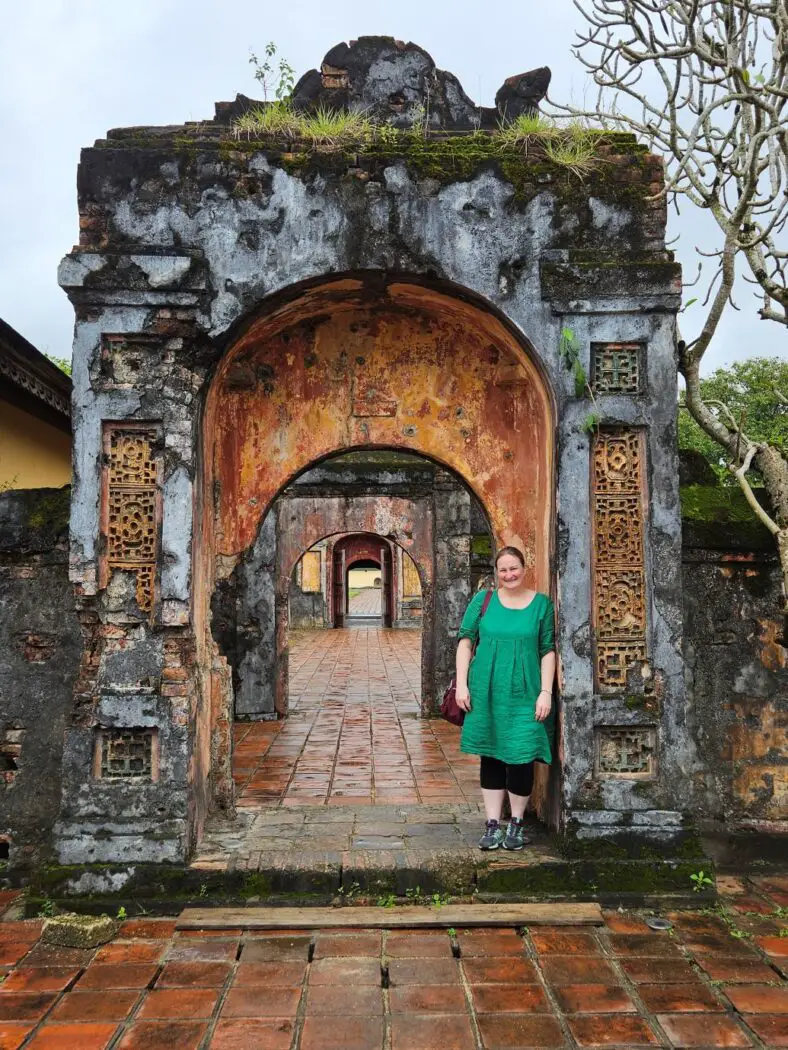
Most people walk around the citadel because there’s just so much to see. It’s flat so isn’t difficult to explore on foot, although due to the size of the complex, you could end up walking miles without realising! There is a shuttle bus that trundles around the main areas if you’d rather not walk (advance reservations recommended).
We suggest exploring in an anti-clockwise direction, starting at the southern entrance gate, and ending at the eastern exit gate. That way you won’t be doing too much doubling back on yourself.
What are the facilities like in the Imperial City?
There are a few small coffee shops dotted around the complex but nowhere really to get a meal. If you want anything other than drinks, cakes and snacks, you’ll need to wait until after your visit. There’s a gift shop too, near the Thai Hoa Palace.
Are there toilets in Hue Imperial City?
Yes, there are pubic toilets inside the Imperial City of Hue which is great news since you’ll probably be spending a few hours there. We found them to be relatively clean and with toilet paper!
Where to stay in Hue
There are plenty of hotels and guest houses in Hue, with most of the hotels located in the city centre, south of the river. We stayed at the Melia Vinpearl Hue – the tallest building in Hue with superb views out across the city, river, distant Ngu Mountain, and citadel. It’s a luxurious modern hotel, with classy rooms, a pool and friendly staff.
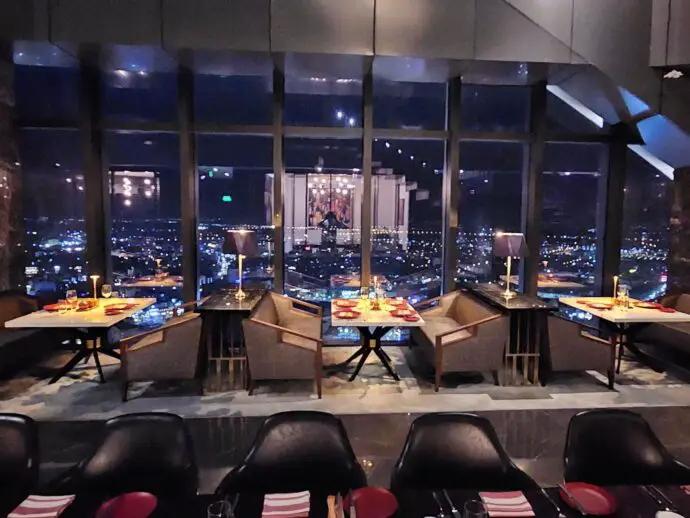
For us, the best part was the panoramic Alma restaurant, truly one of the most gorgeous restaurants we’ve ever eaten in – the night-time views from up here are incredible, and the food was outstanding too. Possibly our favourite hotel on our Vietnam tour!
So, is Hue Citadel in Vietnam worth visiting?
It’s a resounding yes from us, as it gives great insight into the royal past of Vietnam. Hue Citadel and the Purple Forbidden City are very photogenic, which is why so many domestic and international tourists visit each year. If you’re into history and like a bit of opulent architecture, then Hue Citadel is definitely worth visiting if you’re exploring or passing through central Vietnam.

